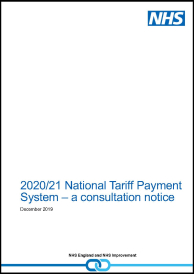Blended payments expansion gets green light
The two bodies had previously indicated – in November’s tariff engagement exercise – that both services would move to a blended payment model. However, in the newly published formal consultation document – 2020/21 national tariff payment system: a consultation notice – it makes it clear that it is effectively offering local systems more time if they need it before making the switch from the existing maternity pathway payment approach.
While systems could stick with pathway payments for the year ahead, it is expected that blended payments will be come the default approach from 2021.
Blended payments are already the default approach for emergency care and adult mental health services, although it is not known exactly how many commissioners are using this approach to contract with provider trusts. However, NHS England and NHS Improvement believe that the majority of areas have arrangements in place that adhere to the spirit of the policy, even if they are not using the exact model defined in national guidance.
Blended payments include a fixed element, based on locally agreed projected activity at national pathway prices, and an outcomes or quality element plus an optional risk share agreement. Crucially for maternity payment, the fixed element is adjusted up or down to reflect historic income flows between providers. This is expected to eliminate provider-to-provider payments that have created a significant administrative burden since the pathway tariff was introduced. (See the right blend, Healthcare Finance December 2019).
It is hoped that using blended payments for outpatient attendances will support the redesign of outpatient services and provide a first step towards paying for activities across care settings. The guidance suggests that blended payments should be used for all outpatient contracts of £4m or more, which would capture around 86% of all activity by value but still leave 80% of contracts out of scope. Again this addresses stakeholder concerns about the potential admin burden related to low value contracts.
More generally the consultation document confirms that the tariff will be set for just one-year and will roll over price relativities from 2019/20, while updating prices for efficiency and inflation. This will mean the tariff continues to use the HRG4+ phase 3 currency design used for 2016/17 reference costs. There are also some detailed changes around chemotherapy remuneration, high-cost drugs and a new best practice tariff for adult asthma care.
The cost uplift factor has been set at 2.5% – taking account of pay, drugs, capital, clinical negligence premiums and general inflation. The efficiency factor has been set at 1.1%, which the two national bodies described as ‘challenging but achievable’.
Related content
We are excited to bring you a fun packed Eastern Branch Conference in 2025 over three days.
This event is for those that will benefit from an overview of costing in the NHS or those new to costing and will cover why we cost and the processes.